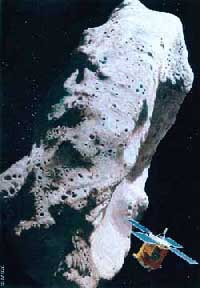A picture by artist Pat Rawling of the NEAR spacecraft in front of Eros.
Click on image for full size
Courtesy of Johns Hopkins University Applied Physics Laboratory
Nearly There...
News story originally written on February 11, 1998
The NEAR spacecraft is on the final leg of its journey. Where has this spacecraft been and where is it going? First of all, NEAR stands for Near Earth Asteroid Rendezvous. So its main focus is --
asteroids! The spacecraft flew by asteroid
Mathilde in June 1997, past Earth in January 1998 and is now on its way to asteroid Eros, the final mission target!
NEAR will arrive at Eros in December 1998. It will go into orbit around Eros. During this time, scientists will map the surface of the asteroid and figure out what Eros is made of.
On February 6, 2000, the mission will come to a climax! The NEAR spacecraft will land on Eros (hopefully in a controlled fashion!).
This is an exciting mission - stay tuned!
You might also be interested in:
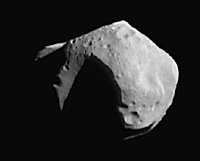
On June 27, 1997, the NEAR spacecraft passed very close to the asteroid Mathilde. NEAR stands for Near Earth Asteroid Rendevous. Mathilde is a large asteroid. Its diameter was estimated to be 60 km. That
...more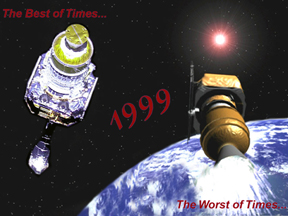
It was another exciting and frustrating year for the space science program. It seemed that every step forward led to one backwards. Either way, NASA led the way to a great century of discovery. Unfortunately,
...more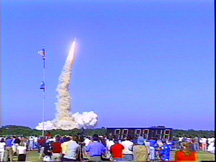
The Space Shuttle Discovery lifted off from Kennedy Space Center on October 29th at 2:19 p.m. EST. The weather was great as Discovery took 8 1/2 minutes to reach orbit. This was the United States' 123rd
...more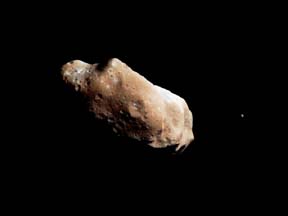
A moon was discovered orbiting the asteroid, Eugenia. This is only the second time in history that a satellite has been seen circling an asteroid. A special mirror allowed scientists to find the moon
...more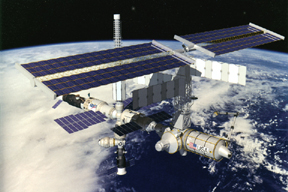
Will Russia ever put the service module for the International Space Station in space? NASA officials want an answer from the Russian government. The necessary service module is currently waiting to be
...more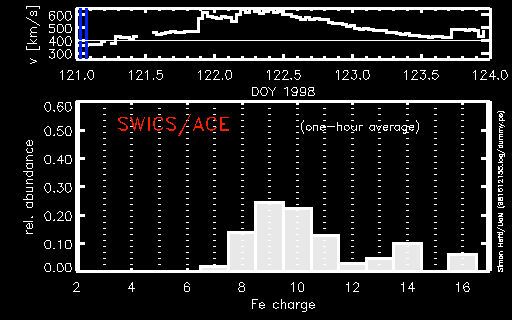
A coronal mass ejection (CME) happened on the Sun early last month. The material that was thrown out from this explosion passed the ACE spacecraft. The SWICS instrument on ACE has produced a new and very
...more
J.S. Maini of the Canadian Forest Service called forests the "heart and lungs of the world." This is because forests filter air and water pollution, absorb carbon dioxide, release oxygen, and maintain
...more


